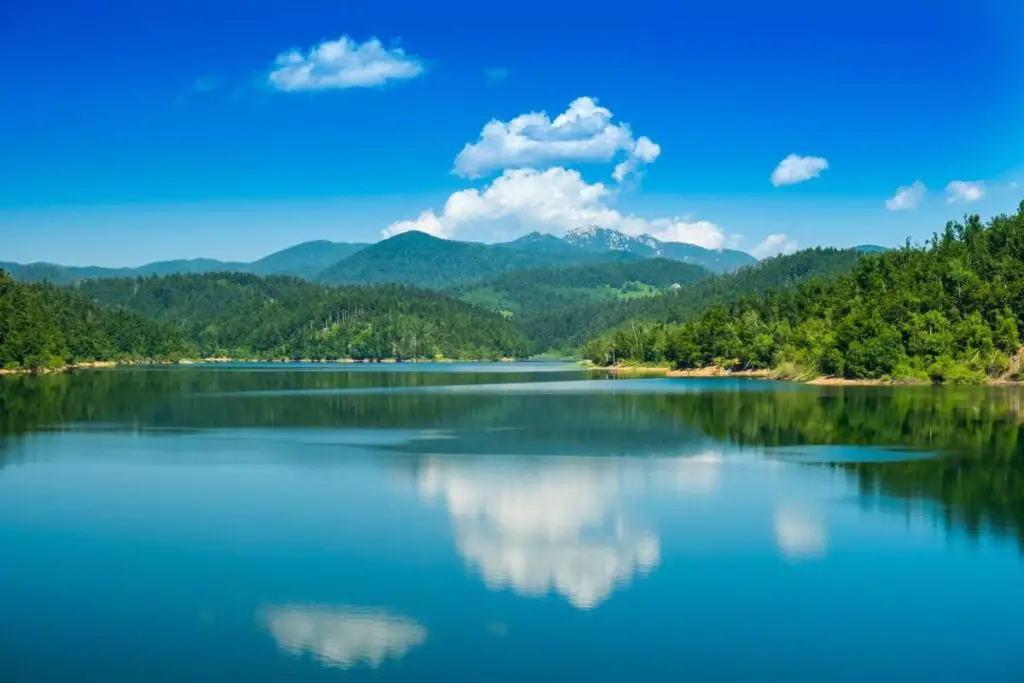|
Getting your Trinity Audio player ready...
|
The environment is everything under the sun, separated by time zones, seasons, and climates. When you talk about the environment and its components, you are looking into the broadest subject in the world. So, what are the components of the environment?
The components of the environment include the biotic and abiotic components. The former includes all living things in the environment, which include humans, animals, and microorganisms, while the latter refers to every non-living thing in the environment.
In this article, we explore what the environment is and all of its components in detail.

What Is the Environment?
The environment is the livable part of the world shared by biotic components (living things) and their abiotic counterparts (non-living things). These two classes are best known as the components of the environment.
The environment is also the sum of all existing physical, biological, cultural, and political conditions surrounding an organism.
All of these conditions play unique roles in the growth and survival of an organism.
What Are the Types of Environment?
There are four main types of environment – the microenvironment, the macro environment, the natural environment, and the man-made environment. Each of these has different features, components, and constituents.
Micro Environment
This is your immediate surroundings and everything unique to it. As a human, your microenvironment is the world around you.
The house you live in, the houses around you, the birds in the sky above you, the churches, hotels, clubs, malls, roads, and everything you can find in your surroundings make up your microenvironment.
Macro Environment
The macro-environment refers to a broad range of external factors in an organism’s environment. Your macro environment is the external part of your environment.
It’s not directly related to you but affects you in many ways. In many cases, you can’t control the effects of your external environment. The macro-environment includes demography, political settings, racial divides, economic changes, sociopolitical changes, and natural forces.
Natural Environment
The natural environment is a gift to the world. It bears everything (living and non-living) not created by man. Components of the natural environment include everything from the land to the seas, the forests and deserts, lakes, and birds of the sky. All of these are integral parts of the natural environment.

However, the natural environment has significantly changed as humans continue to modify it. This brings us to the last type of environment.
Man-Made Environment
The man-made environment refers to everything you can find around you and your external environment made by technology.
Over the centuries, humanity has altered the natural environment in diverse ways, from clearing out ecosystems to creating new ones.
Components of the man-made environment include houses, roads, bridges, resorts, towns, cities, cars, planes, dams, tunnels, and many more.
For clarity:
- The microenvironment is your locality, and everything inside that affects you directly.
- The macro environment is your state, region, country, politics, economy, climate, race, and external factors that influence your life in one way or the other.
- The natural environment is the ecosystem around you.
- The man-made environment includes artificial additions to the environment through technology to aid industrialisation and make us more comfortable.
Examining the Components of the Environment in Detail
The environment has two unique categories – physical (abiotic) and biological (biotic).
The Biological Component (Biotic)
Biological components of the environment refer to all living things that use the resources from the environment to live, grow, recreate more living things, and eventually die.
The biotic components of the environment include:
- Humans
- Plants
- Animals
Humans
Biologically, humans are classified under animals. However, we are often called higher animals due to our improved reasoning capabilities. Our advanced reasoning has positioned us to be “in charge” of the components of the environment (the abiotic and other biotic aspects of the environment).

Since we are more developed mentally, we can create sustainable solutions to the challenges of the environment and utilise its abiotic resources for our good.
When we are classified as animals, humans are further sub-classified as omnivores because we eat plants and animals.
Plants
Plants are the largest diversity of living things. We have millions of plant species and subdivisions of species scattered across the environment. More than 80% of the food we eat comes from plants, while the rest comes from animals.
Plants are also food sources for other living inhabitants of the environment, including animals and microorganisms. They can manufacture their food without the help of any other living thing, and this is why they are called autotrophs. They also absorb the carbon dioxide we breathe into the environment and give us oxygen.
Without plants, most animals would die from excessive carbon in the atmosphere, and every other biotic element will cease to exist.
Animals
Animals are the second most-diverse living components of the environment. They are also a source of food for humans and raw materials for the creation of many usable products. Some of the products we create from animals include hides, skins, drums, shoes, and various clothing items.
Animals are heterotrophs that are not capable of manufacturing their food. They depend on plants for food and feed on other animals.
Animals that eat other animals are known as carnivores, those that feed on plants are called herbivores, and those that feed on dead animals or humans are called scavengers.
Another class of animals is known as parasites. They live inside humans and animals while feeding from the blood of their host. The last class of animals is known as decomposers.
They live on dead and decaying organisms, whether plant, human, or animal, and feed on these dead organisms to break them down into nutrients for themselves and the rest of the environment. Humans and plants use these nutrients for different purposes.
The Physical Component (Abiotic)
Physical or abiotic components of the environment are mainly natural or created by a natural process. They are non-living things and create a perfect world for living things to exist and thrive.
The abiotic components of the environment include soil, air, water, energy, climate, deserts, arable lands, etc.
The abiotic part of the environment has three distinct categories:
- Lithosphere. This is the more physical and geological part of the environment, including the land, rocks, hills, and mountains.
- Hydrosphere. This refers to the water components of the environment. It encapsulates oceans, seas, lakes, and numerous water bodies.
- Atmosphere. The atmosphere is a mixture of gasses that surround the environment. These gasses are more felt than seen.
Factors That Sustain the Components of the Environment
There are many factors that work together to keep the environment alive. These factors are reasons why the earth is habitable for biotic and abiotic components. They include:
- Oxygen: Without oxygen, there will be no biotic unit of the environment. It is likely why we have found no proof of life on planets other than Earth, which has an atmosphere made up of 21% oxygen.
- Water: Water is essential for the survival and growth of living things. Without water, the biotic components of the environment can’t survive for long. Water is also the home of marine life – another integral part of the environment.
- Distance from the Sun: The earth is at a safe distance from the sun – if it was any closer, the heat would be too high for anything to exist, and if it was any further, it would be too cold for the biotic components of the environment to survive. The other planets in the Solar System are uninhabitable because they are too close or too far from the sun. The moon is in the habitable zone but lacks water and oxygen to sustain life.
- Gravity: Humans and animals can stand, jump and sit in the environment because the earth has gravity. Without gravity, whatever goes up will continue to ascend and never come down. This happens on other planets where things float in the air, and there is no balance. Astronauts must wear special gear in space to counter the loss of gravity, and even then, they still float most of the time.
- Minerals: Minerals are one of the most important abiotic components of the environment. They are found everywhere in the environment, including inside plants. Many minerals serve as key nutrients to the biotic elements of the environment, including plants and humans. Aside from plants, many minerals are found inside the earth, including minerals like carbon, hydrogen, iron, magnesium, and other elements.
The Importance of the Environment
The environment provides a healthy space for humans and non-living elements to interact continuously. Without the environment, the earth wouldn’t exist. We depend on it for air which is essential to staying alive.
We also rely on the environment for food and raw materials to create clothes, build houses, roads, devices, and everything necessary for survival under the sun.
Final Thoughts
The environment is a great blessing from nature. The environment closest to us (microenvironment) and the environment around us (macro-environment) influence how we live our lives daily.
The components of the environment are the essence of its existence.
Both living (biotic) and non-living (abiotic) components of the environment combine and interact for survival. This is called an ecosystem.
While humans, plants, and animals constitute the biotic component of the environment, the atmosphere, land, water, light, and air are the abiotic components. Together, they make the environment livable.

